The Music of the Safe and Sound Protocol (SSP)
With the SSP, you can create a customized program and listening experience guided by your client’s needs, presentation and desired outcomes.
The SSP includes three pathways, or levels of filtration, and five playlists that include vocal and non-vocal music to appeal to a wide range of audiences.
What are the SSP Pathways?
The SSP is made up of three pathways: SSP Connect, SSP Core and SSP Balance, which offer three levels of filtration.
The music in SSP Core and SSP Balance have been filtered through a patented, evidence-based algorithm that highlights specific sound frequencies that help regulate the autonomic nervous system and stimulate the vagus nerve.

SSP Connect
SSP Connect engages the nervous system with full-spectrum music without any filtration or modification.
Many SSP providers start clients on this pathway to assess their sensitivity to listening, create familiarity and expectancy in the nervous system, gently introduce them to the music, and enhance overall readiness for the SSP.

SSP Core
SSP Core retunes the nervous system back to a place of safety with progressively and dynamically filtered music.
SSP Core is the strongest and potentially most therapeutic pathway, progressing dynamically throughout each hour of listening. The music is filtered through Dr. Stephen Porges’ patented, evidence-based algorithm, designed to shift the autonomic nervous system out of a state of defense and to a place of felt safety.

SSP Balance
SSP Balance maintains and extends the benefits with lighter filtration than SSP Core.
SSP Balance features lighter filtration that does not progress dynamically. After completing SSP Core, clients often enjoy listening to SSP Balance to help continue or extend the benefits of SSP Core.
What is filtered music?
All the music in the SSP playlists are thoughtfully sequenced and filtered through the patented,
evidence-based algorithm backed by decades of scientific research.
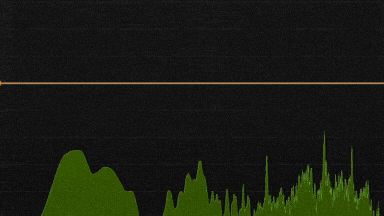
This visual shows full-spectrum sound frequencies in a typical unfiltered clip of popular music.
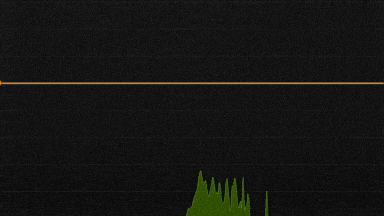
Here is the exact same clip — after being filtered through the SSP’s algorithm.
What does the music sound like?
The SSP contains several vocal and non-vocal music playlists and levels of filtration to help you support client engagement and participation in the listening process. Multiple vocal and non-vocal playlists allow the SSP to be accessible to many populations, and allow you to customize delivery for your client.

This visual shows the frequencies of vocal music, filtered through the SSP’s algorithm.

This visual shows the frequencies of equally impactful non-vocal music, filtered through the SSP’s algorithm.
What are the SSP Playlists?
We are committed to increasing the accessibility and impact of the Safe and Sound Protocol (SSP) by regularly adding more diverse playlists. Each new playlist we introduce and all additional enhancements to the SSP are seamlessly integrated into your annual subscription at no additional cost.
Currently, the SSP can be delivered through four playlists, each offered in all three pathways, or levels of filtration. Explore short samples of tracks from each of the SSP playlists below.
Original
A collection of contemporary songs from the 1970s to date that you may already be familiar with.
Click or tap the play button below to listen to a short sample of the music.

Freely
Original composition of instrumental, non-vocal, ambient fusion music by artist and neuroscientist Dr. AZA Stephen Allsop, MD, Ph.D. Click or tap the play button below to listen to a short sample of the music.

Wonder
Playful, familiar vocal and non-vocal songs that appeal to younger ages, but can be enjoyed by all. Click or tap the play button below to listen to a short sample of the music.

Classical Flow
Accessible, non-vocal playlist of curated classical music. Click or tap the play button below to listen to a short sample of the music.

Groove
An eclectic mix of relaxing instrumentals, pop/rock songs, and percussive beats by acclaimed artist and educator Jim Donovan, M.Ed. Click or tap the play button below to listen to a short sample of the music.

Groove (Instrumental)
An eclectic mix of relaxing instrumentals, pop/rock songs, and percussive beats with no vocals by acclaimed artist and educator Jim Donovan, M.Ed. Click or tap the play button below to listen to a short sample of the music.

Ways to Listen
Whether in person or remotely, in a group session or one-on-one, and indoors or outdoors, there are many ways to create a safe environment for effective SSP delivery.
In-Person
The SSP can be delivered in person with the SSP Provider being in the room to titrate as the session progresses and maintain co-regulation.
Continue your learning with these helpful resources:
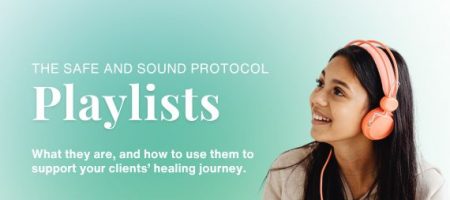
Infographic:
SSP Playlists
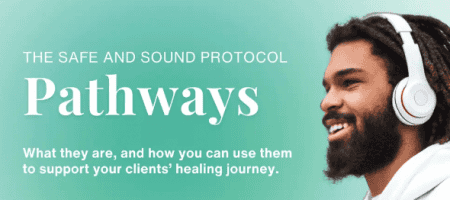
Infographic:
SSP Pathways

On-Demand Webinar:
Introducing SSP Freely
Frequently Asked Questions
Is the SSP customizable? Program delivery may be customized and not all clients need to follow this exact order of listening. The pathways and playlists allow you to create an individualized treatment plan that works best for your client.
What is the duration of each listening session? Listen at a pace that works for your client. There is no rush to complete the SSP. You can adjust the duration of listening sessions based on your client’s autonomic response, delivering as little as one minute per listening session. Guidance on developing client listening plans is included in your Foundational SSP Training.
Can the SSP be repeated? The SSP can be repeated as needed but is not recommended to be used continuously over time. After completing the SSP, some providers report benefits through repeating the entire program (following safe guidelines).
Is vocal music more or less impactful than non-vocal music? No, both types of music have been treated with the same filtration algorithm and are equally impactful. The reason for including vocal and non-vocal music is to appeal to a wide range of listeners.
Will there be more playlists? Yes, Unyte hopes to release two more SSP playlists this year!
Can you switch playlists throughout the course of the SSP? Yes. The filtration of each playlist within each pathway is the same, so your client may listen to different playlists as they progress through the SSP.
Are you interested in learning more about the SSP?
We’re here to help! Our consultants can help decide what is right for your practice and help you get started.


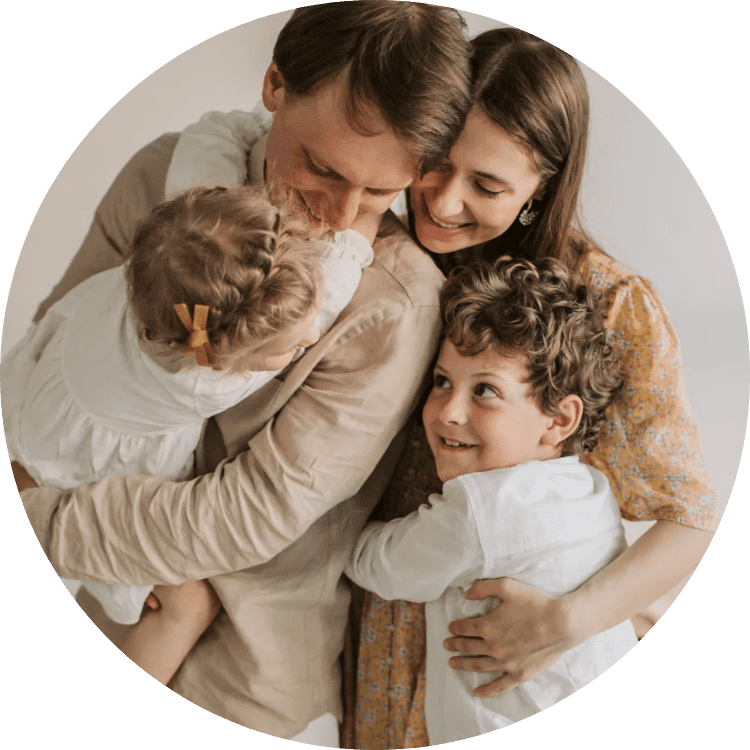

 © 2025 Unyte Health US Inc.
© 2025 Unyte Health US Inc.